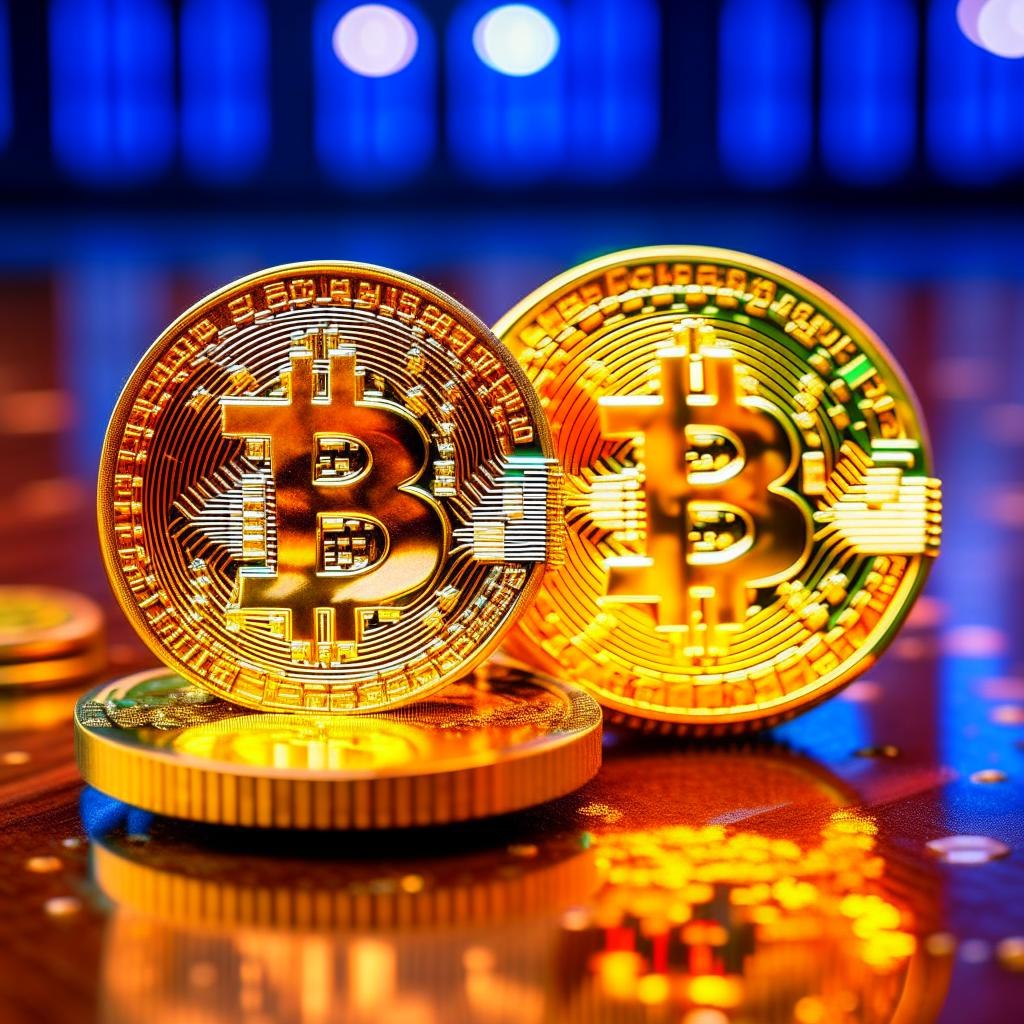In the vast arena of investments, two contenders have consistently captured the global spotlight: gold, the age-old symbol of wealth, and Bitcoin, the digital revolution of modern finance. Investors’ expectations for the gold price have always been influenced by its deep-rooted historical context, positioning it as a beacon of stability and an emblem of ancient riches that has seamlessly woven into modern investing. Conversely, Bitcoin, often referred to as ‘digital gold’, signifies a monumental shift, challenging traditional notions of value storage in the digital era. Yet, as both assets shimmer with potential, the debate continues: between gold and Bitcoin, which truly stands out as the superior investment?
Historical Perspective on Gold Investments
Brief History of Gold as a Store of Value
From the magnificent tombs of Ancient Egypt to the vaults of modern central banks, gold has been a revered commodity for millennia. In civilizations like Ancient Egypt, gold was more than just a precious metal; it was a symbol of power, divinity, and eternal life. The lustrous metal’s innate value made it a sought-after commodity for trade and a cornerstone in the wealth of empires.
As societies evolved, so did the role of gold in the monetary system. The Gold Standard, an economic system wherein the value of a currency was directly linked to a specific amount of gold, further cemented its importance. Nations stockpiled gold, assuring their currency’s stability and trustworthiness. Though the Gold Standard is no longer prevalent, gold’s legacy as a reliable store of value endures, standing the test of time and economic shifts.
Modern Uses and Value
Gold’s allure isn’t just historical; it’s deeply interwoven into the fabric of today’s global economy and culture. One of the most apparent uses of gold in the modern era is jewelry. Coveted for its beauty and durability, gold ornaments grace the showcases of stores worldwide, symbolizing affluence and elegance.
But beyond the jewelry counters, gold plays a pivotal role in technology. Its excellent conductivity and resistance to tarnish make it invaluable in electronics, from smartphones to spacecraft. Furthermore, central banks and nations continue to hold vast gold reserves, a testament to its enduring value. Mines, often in remote corners of the globe, operate tirelessly, extracting this precious resource, emphasizing the undying demand and relevance of gold in the contemporary age.
Bitcoin: The Digital Gold?
Introduction to Bitcoin
In a world of digital transformation, Bitcoin emerged as the pioneer of a new financial paradigm. Introduced by the pseudonymous Satoshi Nakamoto in 2008, Bitcoin was birthed from the Bitcoin whitepaper, a document that laid the foundation for decentralized cryptocurrencies. At its core, Bitcoin operates on a technology called blockchain, a distributed ledger system that ensures transparency, security, and independence from central authorities. As the world’s first decentralized cryptocurrency, Bitcoin’s creation wasn’t just a technological leap; it was a radical reimagining of how value can be stored, transferred, and created without the confines of traditional banking systems.
Bitcoin’s Growth and Adoption
Bitcoin’s journey from a niche experiment to a recognized financial asset is nothing short of extraordinary. One of the early milestones that propelled its growth was the establishment of Bitcoin exchanges, platforms where users could buy or sell the digital currency. These platforms gave Bitcoin liquidity, allowing it to be more readily converted to traditional currencies.
As the years progressed, Bitcoin experienced halving events – pre-coded reductions in the rewards miners receive for adding new blocks to the blockchain. These events, anticipated by many, often influenced Bitcoin’s price and scarcity dynamics.
Yet, Bitcoin’s real moment of acceptance came when institutional investors began recognizing its potential. Hedge funds, asset managers, and even some traditional banks started to dip their toes into the Bitcoin realm. Add to this the development of technologies like the Lightning Network, which seeks to address scalability issues, and it’s clear that Bitcoin’s trajectory has been on an upward trend. Its growing integration into mainstream finance has only fortified its position as a modern-day store of value, often drawing comparisons to gold.
Comparative Analysis
Volatility and Stability
Gold has been a cornerstone of the financial world for millennia, praised for its stability even during tumultuous market conditions. Throughout various financial crises, gold often served as a sanctuary for investors, its price either holding steady or even appreciating when other assets plummeted. Its low correlation with other financial assets makes it a valuable diversifier in an investment portfolio.
Bitcoin, on the other hand, is known for its infamous volatility. Since its inception, the digital asset has seen substantial price swings, with periods of rapid appreciation known as bull runs, followed sometimes by sharp corrections. While Bitcoin enthusiasts argue that its volatility decreases as adoption grows, it’s undeniable that Bitcoin still experiences more dramatic price fluctuations than gold.
Liquidity and Accessibility
Gold, while tangible and palpable, has barriers to entry and exit. Converting gold bars or coins into cash requires a buyer or a dealer, and the process isn’t always instantaneous. Storing physical gold can also present challenges and costs. However, with the advent of global markets and gold ETFs, gold’s liquidity and accessibility have improved.
Bitcoin, in contrast, is digital and operates 24/7 on online exchanges, making its liquidity unparalleled. Transactions can occur within minutes, and with the proliferation of Bitcoin ATMs, converting Bitcoin to fiat currency or vice versa is becoming increasingly convenient. The decentralized nature of Bitcoin also allows for peer-to-peer transactions without intermediaries.
Store of Value and Inflation Hedge
Traditionally, gold has been the go-to hedge against inflation and currency devaluation. As central bank policies, particularly quantitative easing, flood the economy with more currency, the value of tangible assets like gold typically remains robust.
Bitcoin, often labeled as ‘digital gold’, is gaining traction as a modern hedge against inflation. Its capped supply at 21 million coins ensures scarcity, a key ingredient for a store of value. As more investors and institutions turn to Bitcoin to protect their wealth from inflationary pressures, its reputation as a store of value strengthens. However, its short history compared to gold means the jury is still out on its long-term efficacy as an inflation hedge.
Regulatory and Geopolitical Risks
Gold has faced regulatory challenges in the past, with events like gold confiscation in the 20th century USA serving as a stark reminder. However, globally, gold is largely accepted and seldom faces outright bans.
Bitcoin’s story is more nuanced. As a disruptor of traditional finance, it’s been at the crosshairs of regulators worldwide. Entities like the SEC grapple with how to classify and regulate it. Some countries embrace the technology, while others impose strict regulations or outright bans. Additionally, geopolitical events can influence nations’ stances on cryptocurrencies, making the regulatory landscape for Bitcoin more dynamic and unpredictable than that of gold.
Future Outlook
Predictions for Gold
The future of gold remains an enthralling topic for investors and analysts alike. Based on current data and trends, there are several predictions surrounding the gold market. For one, as mining becomes more challenging and resource-intensive, the cost of extraction may increase, potentially putting upward pressure on the gold price forecast. The demand for gold, especially from sectors like technology and jewelry, is expected to remain steady, if not increase. Additionally, the rise of Gold ETFs could continue to make the asset more accessible to the general populace, further driving demand. However, there’s also a shift towards sustainability in mining, with “green mining” practices coming into focus. If these practices become mainstream, they might influence the overall dynamics of the gold market.
Predictions for Bitcoin
Bitcoin’s future, though younger than gold’s, is rife with possibilities. As technological upgrades like the Taproot enhance its functionality, there’s a belief that Bitcoin could find more use cases, particularly in decentralized finance (DeFi) applications. The community continually works on scaling solutions to handle more transactions and reduce fees, making Bitcoin more feasible for everyday use. Mainstream adoption is another trajectory to watch. As more institutions and retail investors warm up to the idea of Bitcoin, not just as an investment but also as a legitimate currency, its role in the global financial ecosystem could further solidify. The blend of technological advancements and shifts in perception means Bitcoin’s journey is one that’s poised to be transformative.
Conclusion
As the tides of finance ebb and flow, the shimmer of gold and the digital allure of Bitcoin stand out as beacons guiding the future of investing. Both assets, with their distinct histories and prospects, present unique opportunities and challenges. Gold, with its millennia-old reputation, offers a sense of stability and tangibility. In contrast, Bitcoin, the flagbearer of digital currencies, beckons with its revolutionary promise and the allure of the new age.
Yet, in the intricate tapestry of personal finance, one truth remains unchanged: the “best” investment is deeply personal. It hinges on individual goals, risk tolerance, and investment strategies. As the worlds of traditional and digital finance converge, making informed decisions, grounded in research and aligned with long-term goals, becomes paramount. Whether you’re swayed by the weight of gold or the code of Bitcoin, the path to prosperity is paved with knowledge and prudence.
FAQs
.
Absolutely! Investing in both gold and Bitcoin can be a smart way to diversify your portfolio. Diversification helps to spread risk across different types of assets, potentially mitigating losses if one of them underperforms. By holding both a traditional store of value like gold and a digital asset like Bitcoin, investors can achieve a balance, benefiting from the stability of gold and the growth potential of Bitcoin.
Starting your journey into Bitcoin investing is quite straightforward:
1. Choose an Exchange: Register on a reputable Bitcoin exchange where you can buy Bitcoin using fiat currency.
2. Secure a Wallet: While many exchanges offer wallets, it’s advisable to transfer your Bitcoin to a personal wallet for enhanced security. Hardware wallets are especially secure.
3. Make a Purchase: Buy Bitcoin on the exchange and transfer it to your wallet.
Always prioritize security, use strong passwords, and enable two-factor authentication where available.
Indeed! Besides gold, other precious metals like silver and platinum have historical significance and investment value. Similarly, in the realm of cryptocurrencies, there are numerous “altcoins” (alternative to Bitcoin) with promising features and use cases. Ethereum, for instance, offers a platform for decentralized applications and has seen significant growth. When exploring investment options, it’s always good to research and possibly diversify across various assets to capture a broad spectrum of opportunities

